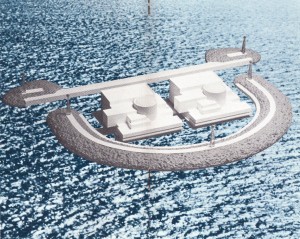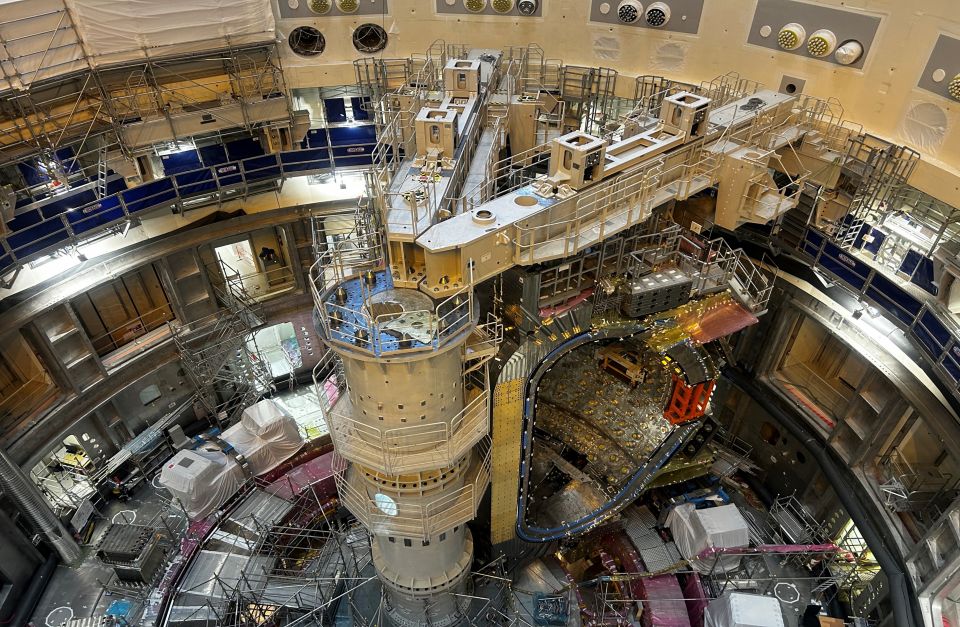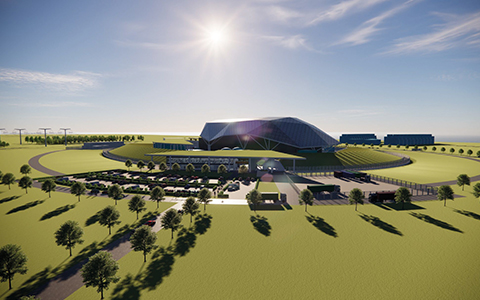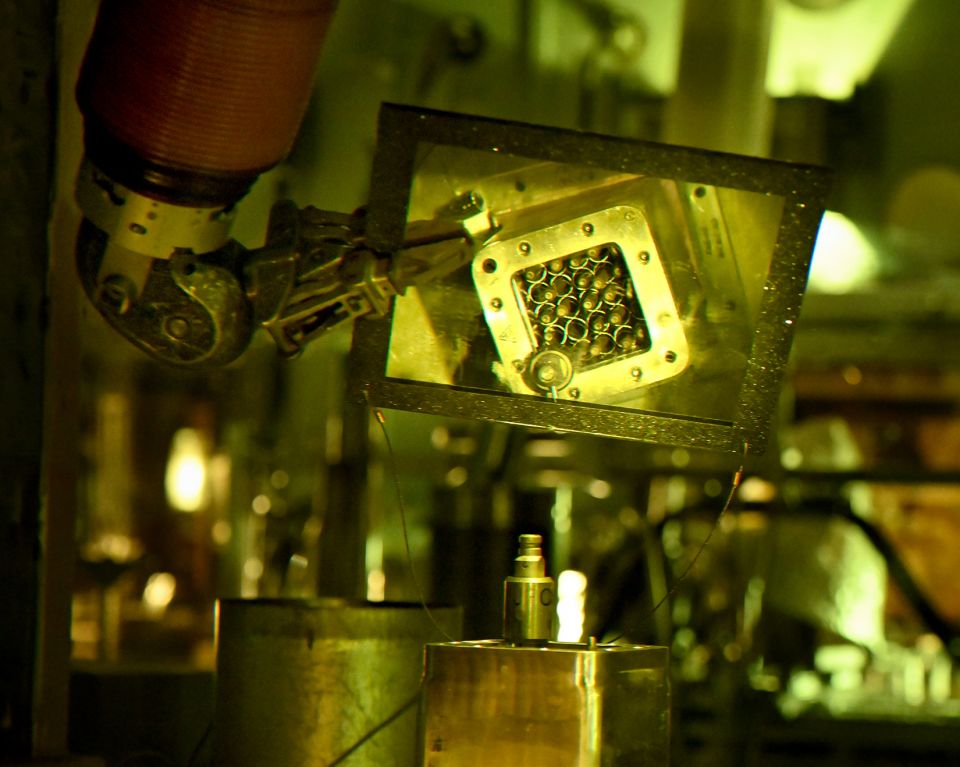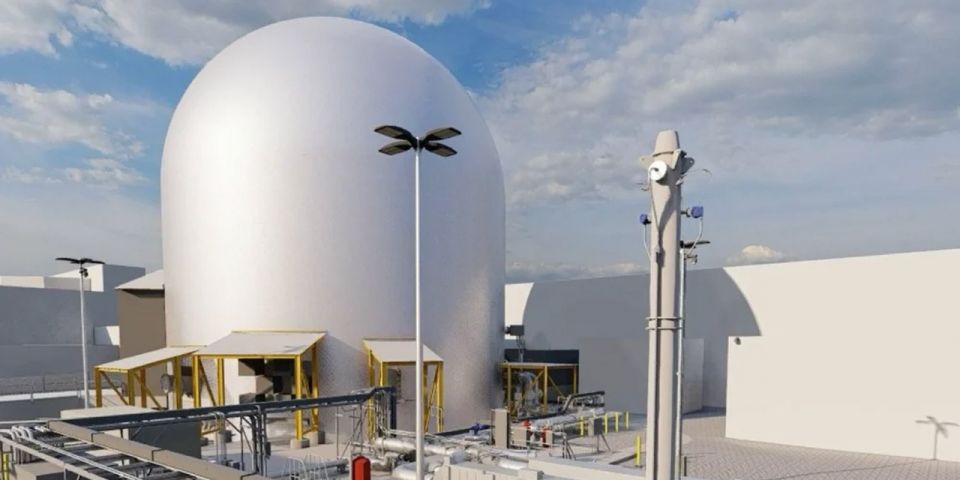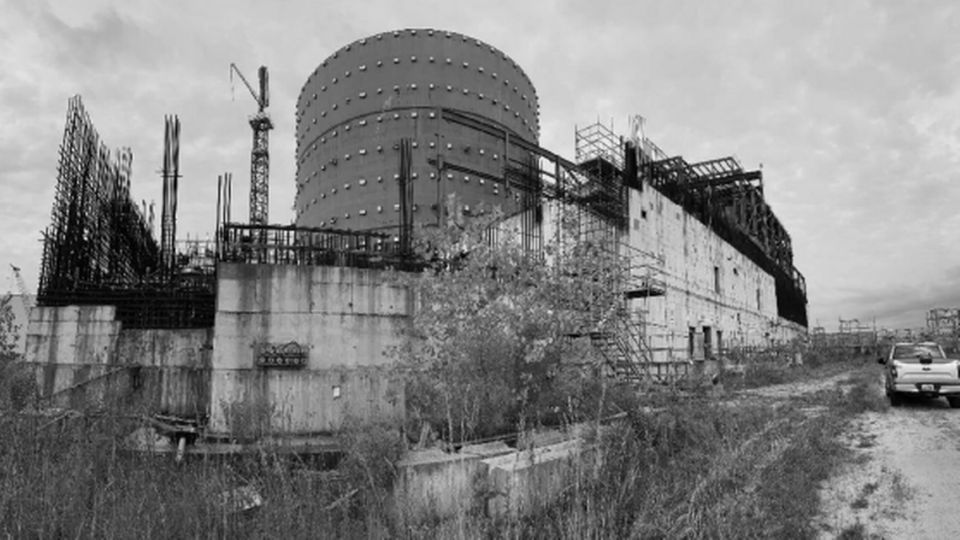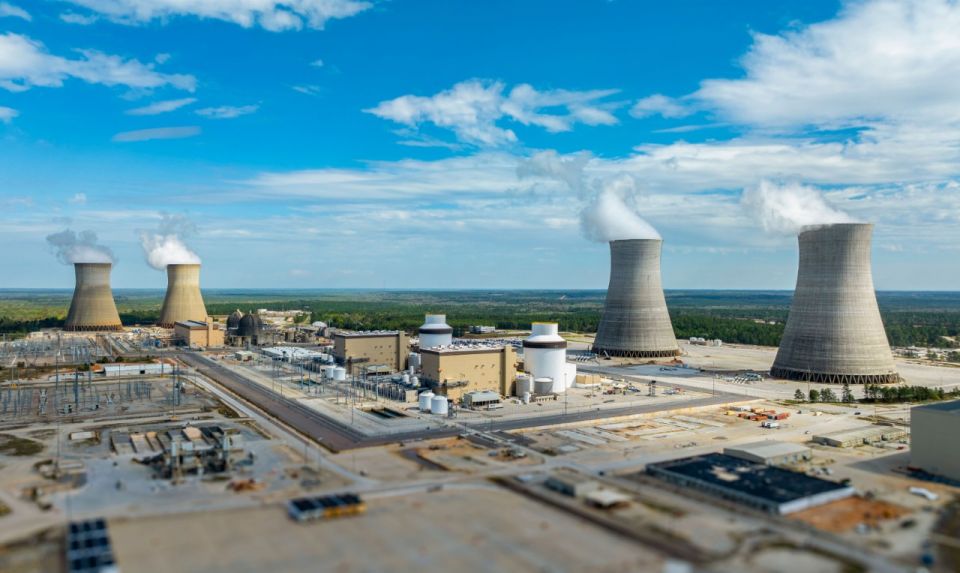The Atlantic Generating Station
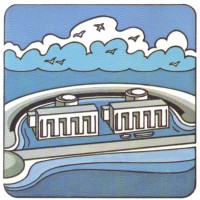 Recent announcements and news stories about a Russian project to build a floating and essentially portable nuclear power plant have been variously tabbed with the heading "new." The idea of a floating, mobile nuclear plant (which is not self-propelled and not a ship) is indeed not new-the nuclear barge STURGIS, itself a converted Liberty Ship, served as a power source for the Panama Canal for many years, beginning back in 1967. The new Russian plants bring extra excitement because they are classed, properly, in the now-popular small modular reactor plant category, having been based on true seagoing designs. This, of course, hints at the fact that their output will not approach that of any of the large, conventional nuclear plants familiar today.
Recent announcements and news stories about a Russian project to build a floating and essentially portable nuclear power plant have been variously tabbed with the heading "new." The idea of a floating, mobile nuclear plant (which is not self-propelled and not a ship) is indeed not new-the nuclear barge STURGIS, itself a converted Liberty Ship, served as a power source for the Panama Canal for many years, beginning back in 1967. The new Russian plants bring extra excitement because they are classed, properly, in the now-popular small modular reactor plant category, having been based on true seagoing designs. This, of course, hints at the fact that their output will not approach that of any of the large, conventional nuclear plants familiar today.
For the historian, the question might then come to mind as to what the largest nuclear plants ever seriously considered for construction to such a design were. The answer is very simply this: Full size, commercial nuclear plants in the normal (>1000 MWe) range common today. While the plants weren't to have been fully mobile in the same sense, they were to have been barge-mounted and would have remained floating while in operation.
In the late 1960s, Public Service Electric & Gas (New Jersey) began to invest very heavily in nuclear energy. The company bought a major investment in Philadelphia Electric's Peach Bottom expansion, and also began to order units of its own. In 1966, PSE&G ordered Salem Unit 1, followed in 1967 by Salem Unit 2 (both from Westinghouse); in 1969, PSE&G awarded a contract to General Electric for its Newbold Island nuclear station (two units), which eventually would be cancelled for siting reasons; however, with that cancellation, simultaneously the project was moved next to Salem to be built as Hope Creek. According to PSE&G literature of the period, because of increasing worry about the thermal effects (waste heat) of nuclear plants, it decided to make its next order for a nuclear plant a bold, radical step; it decided to contract with Westinghouse to construct nuclear plants essentially at sea, in a man-made structure and mounted on floating barges.
 The site eventually chosen after some consideration and study was as shown here in an original advertising illustration from a PSE&G brochure on the project. The caption reads: "The proposed offshore site is 2.8 miles out in the ocean, off Little Egg Inlet, and approximately 12 miles north of Atlantic City." The location chosen kept the nuclear station out of major shipping lanes.
The site eventually chosen after some consideration and study was as shown here in an original advertising illustration from a PSE&G brochure on the project. The caption reads: "The proposed offshore site is 2.8 miles out in the ocean, off Little Egg Inlet, and approximately 12 miles north of Atlantic City." The location chosen kept the nuclear station out of major shipping lanes.
The site itself would have been prepared (with a breakwater surrounding it) including two moored, side-by-side nuclear power plants, separate from each other but identical and which would have been mounted on gigantic rectangular barge structures. According to the PSE&G brochure, "The Atlantic Generating Station," the construction process would have been as follows:
"The breakwater will be the largest and strongest structure ever built in the ocean. First, concrete caissons will be floated to the site, sunk, and filled with sand and gravel. Next, thousands of tons of rock will be brought by barge to create the artificial reef, within which the plants will be moored. The mound facing of the reef will consist of sand, gravel, and stones topped by an armor of interlocking pre-cast concrete units called 'dolos.' A typical large dolos weighs 42 tons and measures 20 by 20 feet. Approximately 70,000 of these dolosse, in various sizes, will be placed on the breakwater."
The structure and the plants were designed to survive 43 foot waves, sustained (continuous) hurricane winds of 156 miles per hour and tornado winds of 300 MPH.
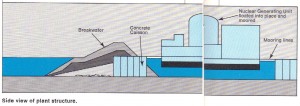 Above, cross-section view of the installation as planned. (Our apologies for the slight imperfections in some of the illustrations, which are contained in vintage materials, are not always printed perfectly, and which are often printed across the center staple fold.) Below, an artists' illustration of the plant, whose official name was in fact the Atlantic Generating Station, from the air.
Above, cross-section view of the installation as planned. (Our apologies for the slight imperfections in some of the illustrations, which are contained in vintage materials, are not always printed perfectly, and which are often printed across the center staple fold.) Below, an artists' illustration of the plant, whose official name was in fact the Atlantic Generating Station, from the air.
The two plants that were to become the Atlantic Generating Station (AGS) were first announced in 1971, according to WASH 1174-71, but were not named at that time, nor was a location specified. In September 1972, according to the Atomic Industrial Forum (now the Nuclear Energy Insitute) report "Historical Profile of U.S. Nuclear Power Development," 1985, the two plants were officially ordered from Westinghouse as Atlantic-1 and -2. (The reactor plants were to have been 1150-MWe four-loop PWRs.) The plants were to have been built at a wholly new dedicated facility in Jacksonville, Florida, as a part of a joint Westinghouse-Tenneco operation known as "Offshore Power Systems."
PSE&G had printed, in its public relations materials of the time, that it intended to rapidly increase its nuclear generating assets. From a 1976 brochure on Hope Creek: "To prepare for the coming 'electric economy' when electricity will play an even greater role in our daily lives, PSE&G is relying on nuclear energy. From now until the end of this century, all new major generating units will be nuclear. It is our intention to phase out our oil and coal burning plants and eventually have approximately 50 percent or more of our electric capacity in the nuclear stations we share with other utilities. This nuclear capacity will provide approximately 75% of our energy needs by 1990."
To that end, in November, 1973, PSE&G ordered two further nuclear units of the same type as ordered previously as Atlantic-1 and -2. While the AIF document previously mentioned does not give a plant name or site for these, a later Energy Information Administration/Department of Energy document identifies these plants as Atlantic-3 and -4.
The nuclear plants would have been mounted on barges approximately 400 feet square. The draft of the nuclear plant barge structures (that is, the depth to which they extended underwater) would have been roughly 30 feet; the breakwater/reef enclosure would have had a further 10 feet of clearance under the plants for water flow. In an interesting nod toward today's AP1000 plant and its modular construction, PSE&G said about the AGS units that the shipyard fabrication plan "allows for assembly line production techniques, as well as standardization of design and licensing procedures-which will result in reduced costs and planning lead times." Heavy underwater cables, instead of high tension towers, would have connected the plants to the grid. A shore base would have been built, to shuttle workers to and from the AGS and to station repair parts, consumables, and any other requirements for the nuclear station several miles out to sea.
Above: "Artist's conception depicts how the plant will appear on a clear day to a person standing on the nearest beach." The illustration is meant to dispel the fears that the plant would be an eyesore.
Of course, we all know today how this overall plan played out. PSE&G did not experience nearly the expected growth in electric power demand that it had predicted. While a 1976 PSE&G brochure on Hope Creek also prominently features the Atlantic Generating Station, a 1977 brochure on Salem does not mention it at all. In 1978, PSE&G cancelled all four units ordered for its offshore nuclear power station program, and the AGS project died immediately. (Work did continue on the other plants mentioned earlier, but not even all of these were finished; work on Hope Creek-2 lagged, and that plant was finally cancelled in 1981, leaving Hope Creek-1 a single unit.)
As we can see, a large amount of challenging engineering and construction would have been required to complete the Atlantic Generating Station. One wonders if such a project could survive today's regulatory environment-to say nothing of clearing approval by a utility's ownership when the extra cost of constructing the artificial reef type breakwater and shore-based support infrastructure is considered. The best guess for both right off the bat is "probably not," meaning that the Atlantic Generating Station was probably the closest we'll ever get to a full-scale commercial nuclear plant situated well off shore.
Sources of information and illustrations: Various original PSE&G brochures-"The Atlantic Generating Station" (undated), "Hope Creek Generating Station" (8/76), "The Salem Generating Station" (4/77), "PSE&G: Nuclear Energy" (6/85). Also, "The Nuclear Industry 1971"-WASH 1174-71, U.S. Atomic Energy Commission. "Historical Profile of U.S. Nuclear Power Development," Atomic Industrial Forum 1985. "Nuclear Plant Cancellations: Causes, Costs and Consequences," US EIA/DOE 1983. All materials in Will Davis' library.
For more on this topic, particularly the plant construction end of the project, see Rod Adams' article from 1996 on Atomic Insights.
_________________________________
 Will Davis is a consultant to, and writer for, the American Nuclear Society. In addition to this, Davis is on the Board of Directors of PopAtomic Studios, is a contributing author for Fuel Cycle Week, and also writes his own blog Atomic Power Review. Davis is a former US Navy Reactor Operator, qualified on S8G and S5W plants.
Will Davis is a consultant to, and writer for, the American Nuclear Society. In addition to this, Davis is on the Board of Directors of PopAtomic Studios, is a contributing author for Fuel Cycle Week, and also writes his own blog Atomic Power Review. Davis is a former US Navy Reactor Operator, qualified on S8G and S5W plants.


